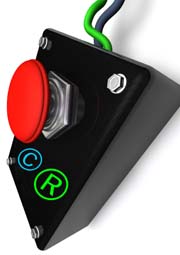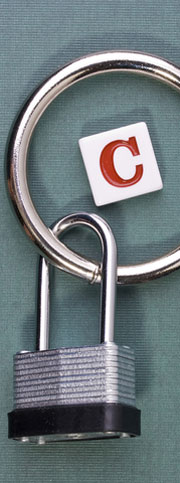Cease and Desist Letter
A cease and desist letter will quite often be the first course of action
for infringement of copyright, trademarks or other Intellectual Property rights.
It is a cost-effective alternative to going to court and may well be sufficient to stop infringement.

What is the Difference Between Cease and Desist?
cease - to literally stop doing an action that already begun;
and
desist - do not start doing this action again at a future time / refrain from doing it again.
The aim is to put a permanent stop to an alleged illegal activity.
We have the following free templates to assit you in compiling your letter:
Sample Copyright C&D Letter - General Purpose Letter.
Copyright Forms - With links to a variety of letters specifically composed for Copyright Infringement on the Internet.
But wait a minute!
Before rushing off to send your cease and desist letter, you will be well advised to consult with an attorney to advise you on the best course of action.
You should not be discouraged from asserting your rights, but bear in mind that the following are possible consequences:

- An infringer may immediately comply with all the demands in your letter. Great! Your letter served its purpose and the matter is resolved amicably.
- It is of course legally possible, if the accused infringer disagrees with your claim of infringement, himself to ask the court for a declaration that there is no infringement.
Where you may have had no intention of filing a lawsuit at all, you are now the unwilling defendant in a declaratory judgement action. - The infringer ignores your letter. Even though you had every intention to resolve the matter amicably, you now have to decide whether to follow through on your threat of further legal action (if you did indeed word your letter as such) with the associated costs involved.
- The accused infringer may have better prior rights to the mark, and demand that you cease and desist use of the mark.
- Your C&D letter may be published on the Internet such as on Lumen Database (formerly Chillingeffects.org). With your letter in the public domain, how will you come across? Will it create adverse publicity for your mark and your company?
Alternatives to the Cease and Desist Letter
- In view of the above, could you have achieved the same result with a telephone call?
- Instead of a letter of demand, a less formal approach may be productive. Send a letter of inquiry:
- Are they aware of the existence of your mark?
- What is their intended use of the mark and how widespread is the use already?
- Can their mark be modified so as to avoid confusion with your mark? - You may want to offer a work-around solution - particularly in the cases of conflicting trade mark registration or domain names. A delineation of spheres of interests, plus disclosures of affiliates, links to each other's websites etc. are possibilities
- In the case of copyright infringement you could first send a polite request to have material removed. If you get no action or response you can then send a formal cease and desist letter.

Advantages of a Cease and Desist Letter
Sending a C&D letter does have specific advantages even if it does not immediately stop infringement.
- It serves as proof of your attempt to resolve the matter before seeking legal action.
- It serves as proof of your notice to the alleged infringer of your rights. Should infringement continue thereafter, you may have a claim of willful infringement.
- It may protect you against an adverse costs order, because it will show that your resort to legal proceedings was the only remedy.
Your letter can be sent by email, but a hard copy should also be sent by certified mail.
A cease and desist letter is not always the best course of action initially! Consult with your intellectual property attorney for advice.
You are here:




